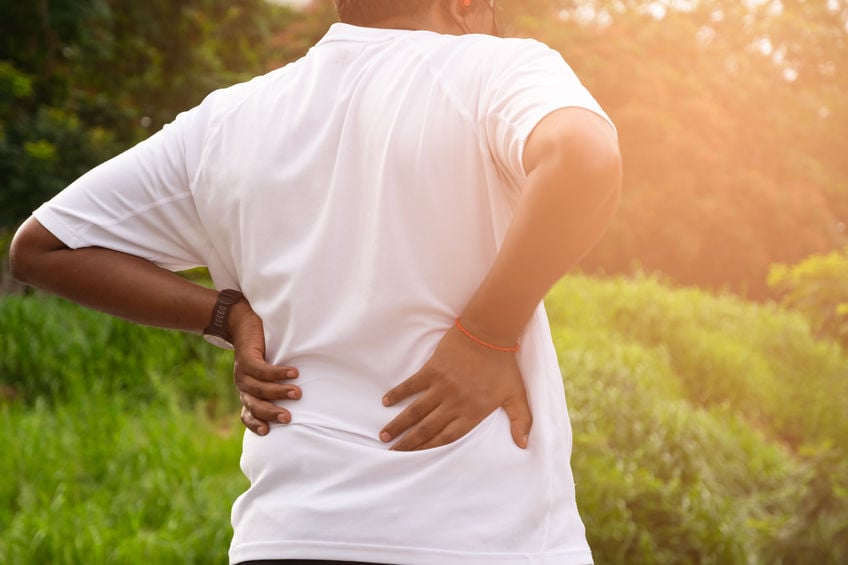Why Do My Joints Hurt?
As people continue to live longer, more active lives, total joint replacement (TJR) surgery has become more common. Replacing worn-out or injured joints can improve pain levels and boost overall quality of life. While discomfort can be a crucial indicator, people should consider surgery in cases of worsening stiff knees, disrupted daily activities, and unsuccessful non-surgical interventions. While surgery is not the first treatment option, a total knee replacement (TKR) helps people with severe pain return to daily activities.

Swollen knees
Pain in the knees is a crucial warning sign a TJR surgery is needed. In cases of painful, stiff, or swollen knees, a total joint replacement is a great option for relief. Many patients report a drastic decrease in pain after surgery. Since the procedure cuts away much of the inflamed flesh and diseased or damaged bone, patients with debilitating pain levels benefit significantly.
Less independence
A knee replacement can be the right solution when joint pain makes life unlivable. However, the success of a TKR depends on both individual and patient needs. When stiff joints and knee pain makes simple tasks like getting the mail or climbing the stairs too painful, total joint replacement surgery can help.
Non-surgical options
From acupuncture and over-the-counter (OTC) medication to physical therapy and steroid injections, non-surgical interventions can go a long way if treatment and care. Surgery provides the critical relief patients need when non-surgical interventions prove ineffective and pain is unmanageable.
Preparing for recovery
Before a total joint replacement, patients need to prioritize a balanced, healthy diet. Nutritional building blocks such as calcium, iron, and fiber stave off any potential constipation triggered by pain medication while supporting bone health. Limiting nicotine usage before total joint replacement surgery helps produce a quick recovery. Often smoking causes breathing issues, increasing the risk of potential complications while under anesthesia. Quitting or drastically lowering use at least a few weeks before surgery limits risk.
Your life, pain-free
While the thought of surgery can be intimidating, joint replacement is a routine procedure that drastically improves the lives of countless Americans. Chronic pain and joint stiffness can be debilitating and exhausting for countless patients. With a TJR, patients can achieve higher mobility and overall improved quality of life.
Can Lower Back Pain Return After Spinal Surgery? 3 Lifestyle Changes To Get The Most Out Of Fusion
Minnesota Valley Valley Center2024-04-02T14:49:38-05:00April 15th, 2024|
Spinal surgery is an excellent solution for lower back pain, but symptoms can return. With lifestyle changes, patients can get the most out of fusion.
A New Lease On Life: Exploring How Robotic Total Joint Replacement Can Get You Active Again
Minnesota Valley Valley Center2024-03-24T17:38:47-05:00March 29th, 2024|
Robotic total joint replacement uses a robotic arm to replace the joint. This innovative approach allows a quick return to activities.
Restoring Dexterity: How Outpatient Carpal Tunnel Surgery Can Change Your Life
Minnesota Valley Valley Center2024-03-24T17:38:37-05:00March 15th, 2024|
After months of wrist and hand pain, carpal tunnel surgery may be needed. With outpatient options, restored dexterity with less pain and discomfort is possible.
More Articles from MVSC
April 15, 2024
Spinal surgery is an excellent solution for lower back pain, but symptoms can return. With lifestyle changes, patients can get the most out of fusion.
February 29, 2024
Rotator cuff tears can severely limit shoulder mobility. Surgery can relieve pain and improve mobility, allowing patients better reach.
January 15, 2024
Spinal conditions in the lower back may require a procedure called laminectomy. With MIS, patients have higher success rates.
December 21, 2023
Clavicle fractures are often treated non-surgically. The location and degree of damage can indicate whether collarbone surgery is needed.










